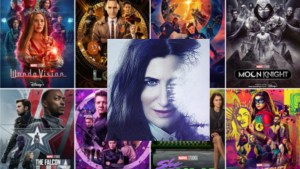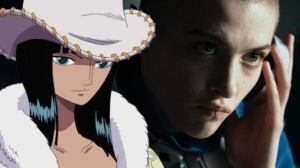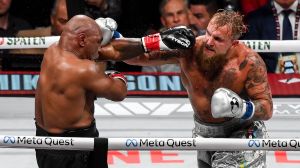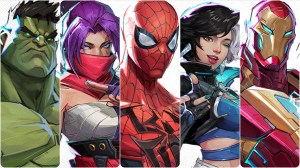Many fans have had the chance to check out Netflix’s The Witcher over the holidays, and much of the reception is quite positive. That said, there is some criticism popping up around the show’s implementation of 3 different timelines, something that can be a bit confusing for those who aren’t familiar with the Witcher mythos. We’re here to break it down for you and let you in on a trick to help keep it all straight, and we’ve also got the explanation from showrunner Lauren S. Hissrich as to why they decided to go with multiple timelines.
Videos by ComicBook.com
Let’s tackle the main thing you want to keep in mind while watching The Witcher, which will help all the timelines make sense, and that’s the ages of the lead characters. Witchers age much more slowly than typical humans thanks to the process that makes them Witchers (Geralt is roughly 100 years old at this point), so regardless of what point in history you’re watching, he will look the same. That means you can’t really look to him for clarification.
We meet Yennefer in episode 2, and her timeline takes place before the others (in the show that is, as Geralt is alive and doing stuff we just don’t see it). Yennefer doesn’t age very much once her transformation occurs, so she’ll mention that it’s been 30 years at one point but she hasn’t aged a day. So she’s not the best gauge either.
As for Ciri, she is the main gauge of aging and time passing in The Witcher, as her story is set in the present, and is the timeframe that Geralt’s adventures throughout the show are moving towards. Yennefer’s big battle at Sodden Hill also meets up with this timeframe, as seen in the final episode.
That should help clear up the characters, but you can also look to Cintra for timeline help. Cintra falls in the first episode, but as we move through the season it pops up again in Yennefer and Geralt’s stories. In short, if you hear or see Cintra, it takes place before the first episode, and if it’s fallen already, it takes place in the present.
We also had the chance to speak to Lauren Hissrich about why they chose this format for the season, and it had everything to do with getting all the characters some spotlight.
“Yes, it does open things up, but the reason I did it was a very, very practical reason,” Hissrih said. “Is that I wanted to adapt the original short stories from The Last Wish and Sword of Destiny, the first two books at Sapkowski wrote. But Yennefer and Ciri aren’t really present in those books because Ciri especially isn’t even born yet. She could have a long way before she comes into fruition, but I didn’t want to wait until Season Three to meet Ciri, so I knew from the beginning that I wanted to play with some kind of non-linear storytelling so that we meet Geralt, meet Yennefer, and meet Ciri each in their own stories, allow them to grow and develop as characters, and really build out their past stories and their motivations, what they want and desire, what they’re scared of, where they come from and where they’re going to. I wanted to build them all individually before I started having them interact with one another.”
“And that basically meant that we needed to play with time,” Hissrich said. “And as a storyteller, it was a huge challenge. I won’t lie. We have a huge timeline in the writer’s room. We’re constantly tracking how much time has passed in every single story. Who has gotten older, who hasn’t gotten older. It was a challenge, but I think it makes the storytelling a lot more layered.”
You can find the official description for Netflix‘s The Witcher below, and you can check out my full review right here!
“Based on the best-selling fantasy series of books, The Witcher is an epic tale of fate and family. Geralt of Rivia, a solitary monster hunter, struggles to find his place in a world where people often prove more wicked than beasts,” Netflix said. “But when destiny hurtles him toward a powerful sorceress, and a young princess with a dangerous secret, the three must learn to navigate the increasingly volatile Continent together.”
Henry Cavill (Geralt of Rivia), Anya Chalotra (Yennefer), Freya Allan (Ciri), Jodhi May (Calanthe), Björn Hlynur Haraldsson (Eist), Adam Levy (Mousesack), MyAnna Buring (Tissaia), Mimi Ndiweni (Fringilla), Therica Wilson-Read (Sabrina), Emma Appleton (Renfri), Eamon Farren (Cahir), Joey Batey (Jaskier), Lars Mikkelsen (Stregobor), Royce Pierreson (Istredd), Maciej Musiał (Sir Lazlo), Wilson Radjou-Pujalte (Dara), and Anna Shaffer as Triss.
The Witcher is available to stream on Netflix now, and you can check out more from our Witcher coverage right here. You can also hit me up on Twitter @MattAguilarCB for all things Witcher!
Also don’t forget to enter for a chance to win some sweet The Witcher swag from Dark Horse Comics, and you can find out all about it right here!





